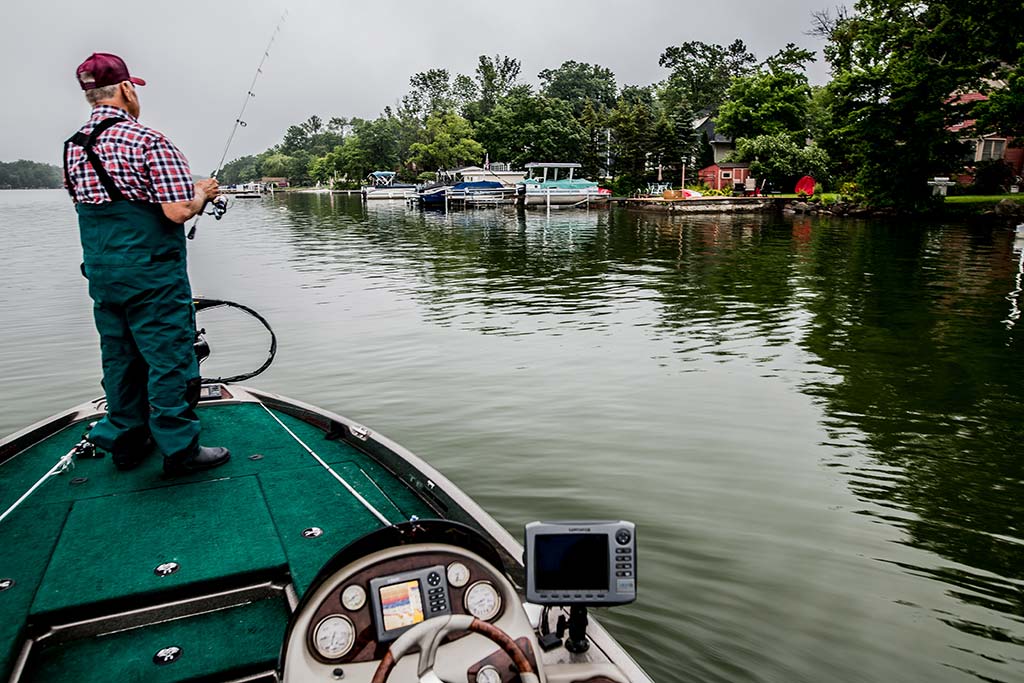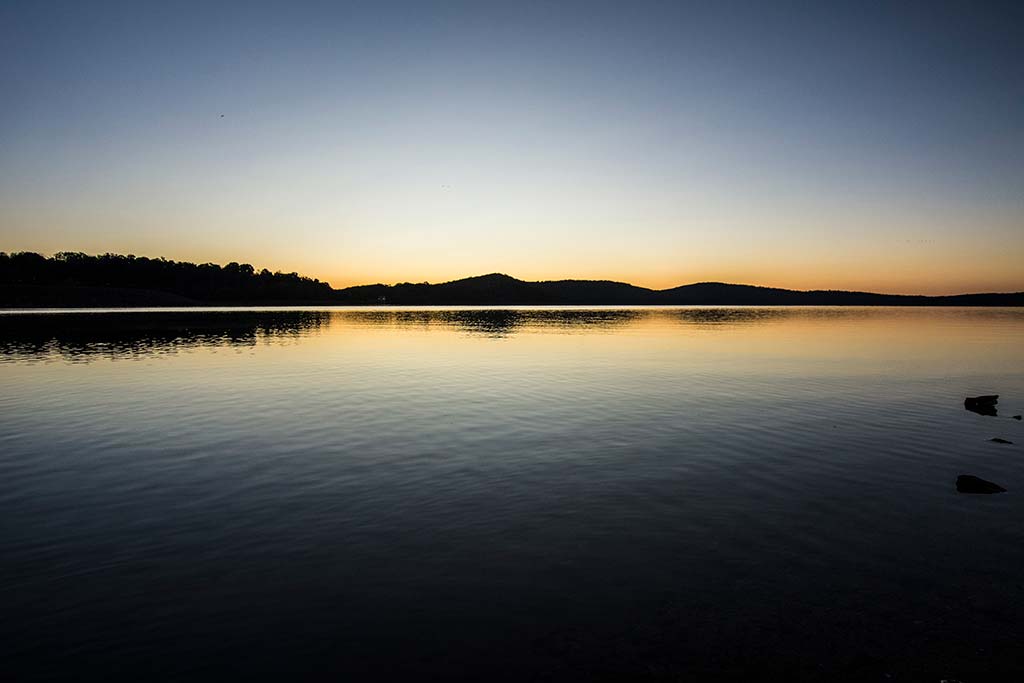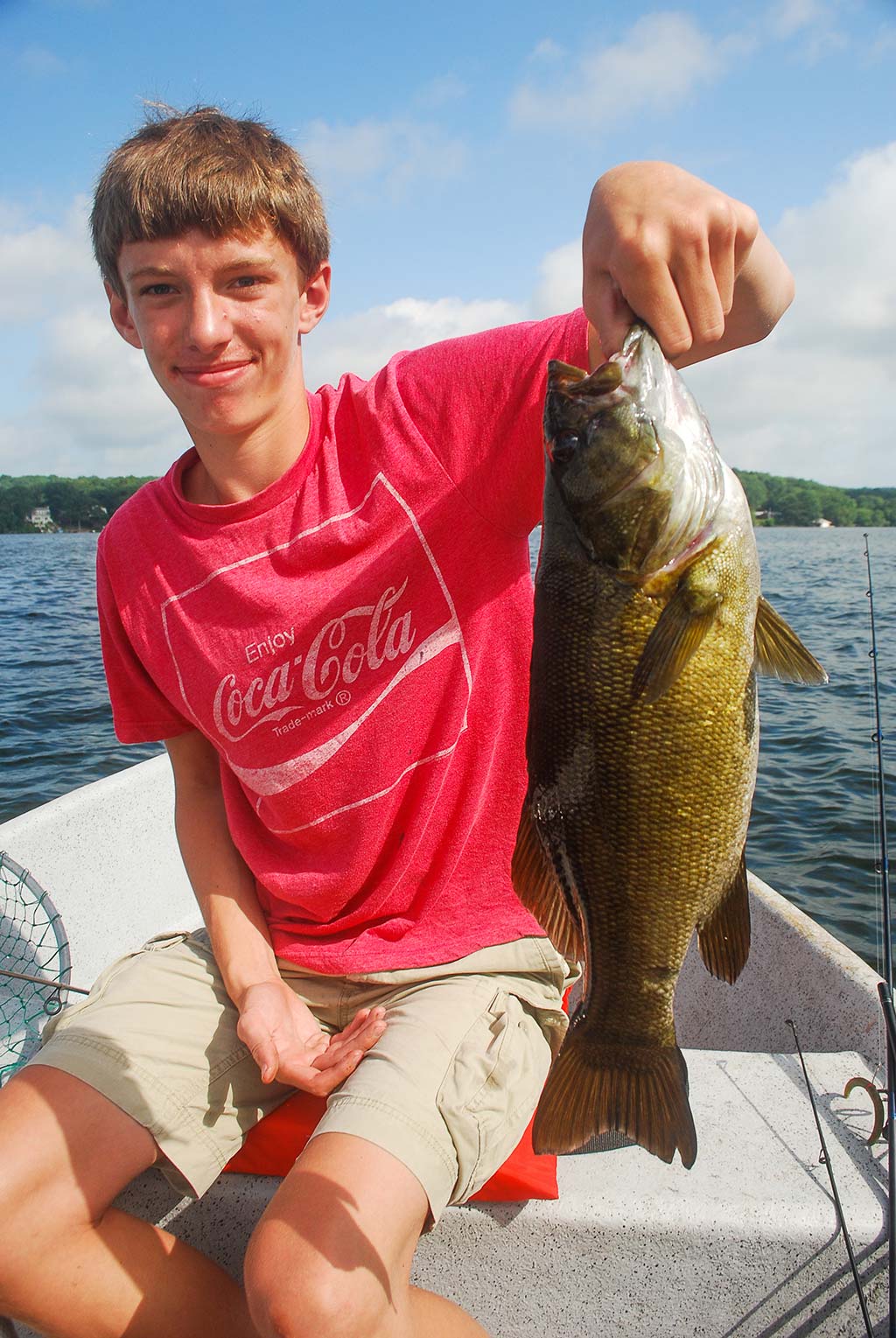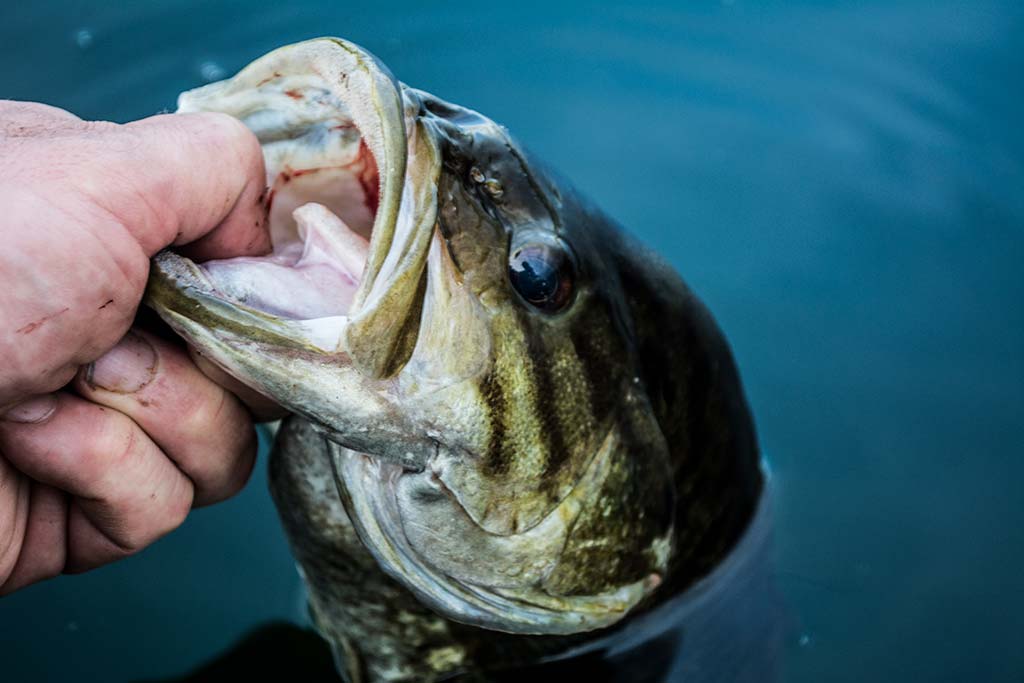
Autumn’s approach means bass anglers need to adapt.
After Labor Day, you notice evening comes on sooner, robbing you of precious daylight after work. The days have been shortening steadily all summer, but the change seems to come on suddenly in September. Not only has the first chill come, you go out on the lake and notice the water temp on the graph unit slipped eight degrees since last time. The quality of light is less intense than it was during August as the angle of the earth distances you from the sun. You feel the seasonal change is here, an absence of summer’s enclosure. Smallmouth bass respond, too.
In lakes and reservoirs, they begin traveling in schools. My August smallmouth catches in Maine involve targeting individual fish at ambush points—behind, under, alongside boulders. They probably prod out crayfish, and they attack other forage. Only once has action involved one bass after another, amounting to only three.
A different situation met me on Quabbin Reservoir late in September. I found a field of jagged boulders dropping at a 45-degree angle into depths, forming a bulwark against the shore that could almost be described as rip-rap. I cast a deep-diving crankbait into clear water, and before I could crank it down 5 feet, a dozen smallies swarmed around it. I felt shocked. I don’t remember how many I caught there, but it felt too easy.

Deep Water Forage
September is the start of the transition to winter. When November water temps drop into the 40’s, smallies will school densely in deep water, but before October, there’s a shorter transition from summer to a kind of September limbo. One afternoon the temperature hits 90 and summer tactics catch bass. A few days later, it’s in the low 60’s when you get on the lake after lunch. Morning temps rose from the upper 30’s, and you’re glad you came in the afternoon but can’t find bass. If you’ve caught them relatively shallow all summer, a September cold front is a good opportunity to try deep.
Crayfish remain active until water dips into the low 50’s, but long before lakes and reservoirs cool as much, forage fish form larger and tighter schools. Besides moving in the interest of their own foraging needs, why would they? Because bass push them. Many forage species need weeds, although alewives will bunch together on drop-offs, points, and humps. After a cold front comes, smallies will sink under that forage and invade it, possibly turned off from feeding much but not altogether.
They Will Come Up
The water remains relatively warm and metabolic need is absolute. Bass will rise for forage, suspending over rocky structure 20 feet down or more. They might also push bait off structure. Lip-less crankbaits can be deadly, but so can an old standby—Mann’s Little George tailspinner. A compact, oval, 1-ounce lead body you can rip through the middle of the water column. Or you can knock deep rocks by a slow to moderate retrieve for any holdouts that might be interested. It doesn’t hurt to drop a Ned rig down into the rocks, either. Tubes work, too, and even Wacky-rigged, unweighted Senkos. It’s easier to use them in water 15 feet deep or shallower, but the relatively slow rate of descent means any suspended bass will have a better opportunity to partake.
Drops accompany steep shorelines, points, ledges dropping off from flats, humps. Don’t overlook humps in 30 feet of water or more. If they’re rocky, they might hold bass. A good method involves casting a bladebait like the Binsky and working it by lifting the rod and letting the lure drop back to the bottom, the line diagonal in relation to the surface. In especially deep water, various jigs fished vertically produce, and yet particularly if a rocky hump is about 20 feet deep or shallower, it might be possible to catch smallies on topwaters. The bass will drive schools of forage fish to the surface and off the structure, staying on the bait as it moves.
Sometimes the topwater bite persists all day when cloudy, even when water is choppy. Since the bass tend to drive bait to the surface, a plug that behaves like the bait can be a winner—whether a popper, prop bait, crawler, or walker. In chop, try a prop bait or crawler, creating commotion by a fairly quick retrieve. Crank a Crazy Crawler steadily, but twitch a Torpedo by quick starts and stops controlled by the rod tip. Buzzbaits work in chop, too

Rocks And Weeds
As I’ve said, weeds support forage fish, and if you find rocks and/or gravel associated with them, you’ve probably found a spot smallies inhabit at least sometimes. Keep in mind that the bass roam a lake, particularly during the fall when their energy level is higher. They move deeper, shallower, and horizontally as they cover range. It’s possible to catch one 40 feet deep, and then catch another shallow minutes later, but if you’re starting out early in the morning, a good rule of thumb is to begin in the shallows, just as it may be wise to end there in the evening.
Especially if the surface is calm, topwaters can be hard to beat. Smallmouths won’t lay in the weeds waiting in ambush as pickerel do, nor do they associate with the greenery as closely as largemouths, but they go after fish forage with more ferocity, picking off the bait that swims over or alongside weeds. Target any sizeable pockets with hard bottom underneath.
I once cast a Rebel Pop-R among weeds to the lakeside end of a little and very shallow gravel shoal. Two feet from shore, I saw a V-wake begin to advance towards my plug, and I thought the fish had to be a pickerel. My afterthought? Why would a pickerel be finning over gravel bottom? It was a smallmouth nearly 19 inches long.
Topwaters aren’t the only option. You can get a spinnerbait into many spots, and jerkbatis won’t get hung up in others, not to mention crankbaits where lanes between weeds have depth. Weedline edges where smallies patrol are also good for crankbaits. You’re going to cull some green stuff, but not enough to prohibit success. Also, you can try a Senko. An all-round smallmouth bait. I always rig them wacky and weightless.
Drop them into sizeable pockets where smallmouth feel drawn to soft and wiggly baits, just as they prefer crayfish with soft shells. Where open water leads back to the boat, you don’t have to retrieve one all the way. Most hits come on the initial drop, so most of the time, if a bass doesn’t take it sitting on bottom a few seconds, I retrieve it back at top speed and look for a target at some distance from the previous cast. I do often twitch or flutter the bait a few times, but completing long retrieves tends to bore me. Besides, almost always, my interest is in a target of limited space.
Gravel Flats
I’ve caught most of my September smallmouths among rocks providing a structure break on a gravel flat, which isn’t to say you’ll do the same, but it’s possible. Shallow water bass once congregated on such structure no more than 8 feet deep—so shallow I felt a quick-sinking Senko was inappropriate. I stuck to 6-inch traditional worms rigged weightless. Blue and watermelon fleck produced. Many bass hit, several worms torn off the hook. Spots like these are ideal if a lake has a lot of gravel and clay and mud but not many rocks.
Plain gravel often produces, though. I don’t know why, but it seems best where shallow. I don’t know if that’s because smallmouths spawn on the like during spring, retaining an associational attraction, but in any event, even depths as shallow as 2 feet or so in very clear water lakes and reservoirs sometimes produce bass. Naturally, spinnerbaits allow fan casting. Jerkbaits, too. Topwaters produce sometimes, and although using a weightless traditional worm seems counterintuitive because flats are usually extensive and you’re not throwing to a dense school of bass, nevertheless, I’ve succeeded this way. In calm, clear water, smallmouths will sometimes swim 15 or 20 feet to pick off a morsel making itself evident by a little splash, so a worm doesn’t necessarily fail at covering water.

Under Pressure?
If spinnerbaits, jerkbaits and topwaters don’t produce, it could be that in clear, highly pressured water, they look too much like what they are—hard-bodied imitations with hooks on them. Give smallies a slow-sinking, soft-bodied, wiggly morsel and they will likely close in. If you do try a worm, don’t bother with an inset hook. Just rig it on a size 2 plain shank. Braid is a good idea for long casts, but use 4 or 5 feet of fluorocarbon leader tied to that braid by uni-to-uni splice. Fluorocarbon sinks, however, and a good argument exists for using monofilament instead. It might slightly reduce the rate of a worm’s descent. I’ve done fine with fluorocarbon, though. It’s less visible, tougher stuff, and I like that.
Shallow flats tend to produce best early and late or under clouds. In any event, wherever you find smallmouths in September, you can expect to encounter added aggressiveness. They’re definitely keying-in on baitfish, and especially away from the shallows, they’re herding that bait as they drive their own energy across acres of lake or reservoir. Adding to that energy’s reserve.
Rather than getting lost in limbo, you can find September an exciting time to fish when the possibility of an especially big bass drives your own energy by turn. The summer crowds are gone and with less heat on your neck, a weightless feel is in the air, inviting you to concentrate on fishing.



